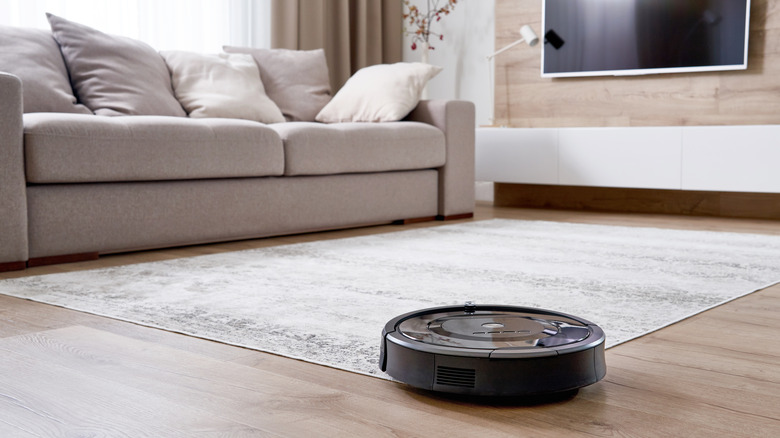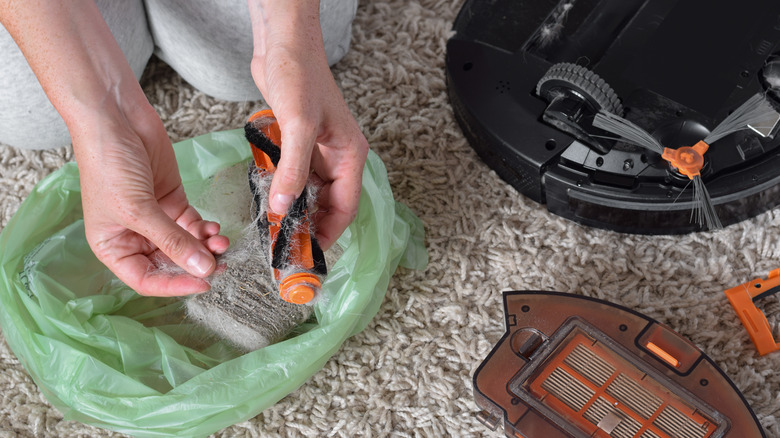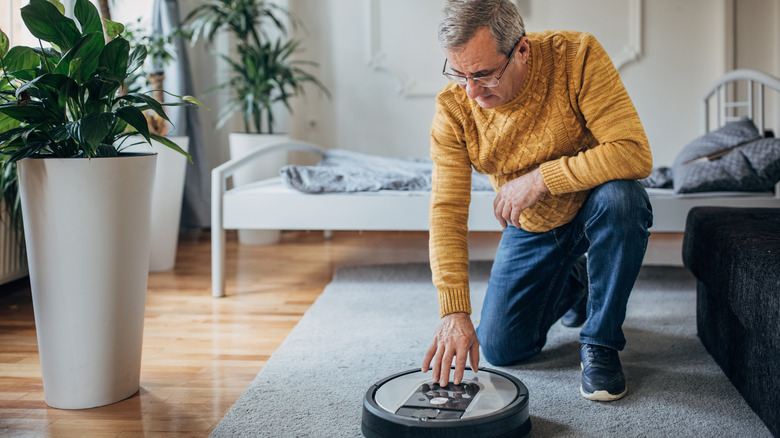The Best Method For Cleaning Your Robot Vacuum
While robot vacuums are extremely convenient, cleaning them is often overlooked and with time, your robot vacuum won't clean your floors as well. Like any traditional vacuum, robot vacuums not only need to be emptied, but the brushes, filters, and other components need a thorough cleaning to make sure the robot can do its job around the home.
The first step to cleaning your robot vacuum is to fully turn it off and empty the dustbin into the trash. This bin should be emptied frequently, and if you have pets, it may need to be emptied after each time the vacuum runs. If the bin is full, the vacuum won't be able to collect as much dirt from your floors. Once the bin is empty, you'll need to remove and clean the filter. Every robot vacuum is different, and while some filters can be washed with water, some should never get wet. For these types of filters, it's best to remove the dust with either an old toothbrush or paintbrush.
How to clean a robot vacuum's bin and brushes
Emptying a robot vacuum bin is usually enough as far as cleaning it goes, but sometimes dirt can build up along the sides. While some parts of traditional vacuums can be cleaned in the dishwasher, the components of a robot vacuum cannot. Instead, try wiping out the bin with a clean, dry microfiber cloth, or if it's really gross, wash it with hot water and dish soap, making sure it's totally dry before reassembling your vacuum.
For those with long hair or pets, the brushes of your robot vacuum sometimes get tangled with hair, which prevents them from sweeping up as much dust and dirt as they normally should. Robot vacuums typically have a roller brush on the bottom and more brushes on the sides. Start by removing the roller brush and using scissors to cut through any hair or fabric wrapped around the brush. Some of these brushes also have caps on the side that can be removed, allowing you to pull out dirt and debris that's inside the brush.
Then, you can wipe the brush down to remove any dust still stuck to it. Side brushes may just need to be wiped off, but if there's visible debris stuck in the brush, you may have to remove it from the vacuum and use tweezers to pull out the debris.
Cleaning other parts of a robot vacuum
The sensors, wheels, and charging ports of your robot vacuum will need to be cleaned every once in a while, but it's not as difficult as the rest of the vacuum. For these areas, wiping them down with a microfiber cloth will usually do the trick. If the sensors still look dirty after wiping them, try making the cloth slightly damp and going over the spots again, and if rocks or other small objects get stuck in your vacuum's wheels, they can be removed with a pair of tweezers.
For robot vacuums that have a mopping feature, you'll also have to wash the pad of the mop with hot water and dish soap. While some mop pads can be washed in a washing machine, make sure to check the user manual beforehand to ensure it's safe. It's best to clean the brushes and filters every week, but that can be hard to keep up with. You can also clean all parts of your robot vacuum once every month, as long as you're remembering to empty the dustbin.


